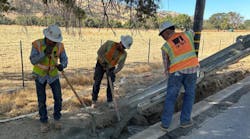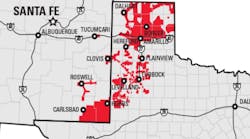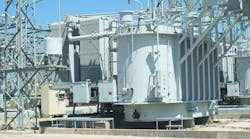PG&E Corp.’s top executives said Oct. 26 they need California Public Utilities Commissioners to quickly reach a “constructive resolution” on the utility’s rate case so that its leaders can avoid “difficult decisions” about work to bury thousands of miles of power lines and other safety investments.
Speaking to analysts and investors after reporting PG&E’s third-quarter results, CEO Patti Poppe and CFO Carolyn Burke said regulators’ responses last month to the company’s general rate case application won’t steer enough cash to the company in a timeframe that will let it follow through on plans to underground lines and invest in other hardening projects. The CPUC is scheduled to hold three voting meetings in November at which it is expected to make a decision on PG&E's application, which will determine its base revenue through 2026.
A high-profile part of the application is the plan to ramp up undergrounding—work seen as a way to nearly eliminate wildfire risk but costing PG&E about $3 million per mile today—from 350 miles this year to 1,750 from 2024 to 2026. PG&E officials have proposed adding $3.40 to the average customer’s bill in coming years to fund that work but the CPUC has recommended (in both a proposed decision and an alternate proposed decision) that PG&E significantly prune its plans.
Poppe said her team thinks those proposals “trade safety and reliability for short-term cost considerations” and also pointed to other elements of the CPUC’s response that don’t fund required maintenance work. Unless the rate case provides more money more quickly, Poppe said, PG&E will need to scale back its plans.
“We don’t want to have to make choices for customers about which essential work we do first,” she said. “I have the team here at PG&E who’s ready to go, who can do that work for customers that can make the system safer, faster. But we need the cash flow.”
Consumer advocacy group The Utility Reform Network last month said that the CPUC’s two proposed decisions would add $24 and $28, respectively, per month to the average residential bill and instead called for any increase to match recent inflation readings.
Despite the large gap between her team’s plan and regulators’ responses, Poppe said Oct. 26 she remains hopeful about upcoming hearing(s).
“We see a path forward to do all of the necessary work that our customers have been begging us to do,” Poppe said. “We’re excited about being able to do that work, and we’re sure that we can get to a good constructive outcome with our regulators.”
Oakland-based PG&E on Oct. 26 reported third-quarter net income of $351 million on total operating revenues of nearly $5.9 billion. Profits were down from $459 million in the prior-year quarter due primarily to higher operations and maintenance spending (some of which had been delayed by first-half storms) as well as a $219 million charge for probable losses related to the 2021 Dixie Fire.
Shares of PG&E (Ticker: PCG) ended trading after the company’s earnings report and conference call at $15.88, down nearly 2% on the day. They have lost about 7% of their value over the past six months, trimming the company’s market capitalization to about $40 billion.


